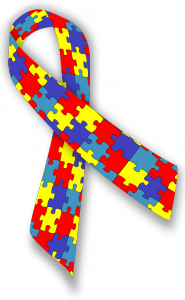Welcome to our latest guest post from Dr. Sonya Doherty. You can read the original post on her blog here.
Dr. Sonya Doherty is a licensed and board certified Naturopathic Doctor who is an active member of the CAND. Sonya Doherty completed her undergraduate training at the University of Western Ontario in a Bachelor of Science Honors Kinesiology program.
Dr. Sonya Doherty writes” Head banging is very common in children diagnosed with autism. From a biomedical perspective, head banging is considered a sign or symptom of an underlying problem. Something is triggering the need to head bang. Children with autism have dysregulated brain chemicals (neurotransmitters) that impair their ability to process sensory information. This sensory processing impairment causes pain. Sometimes a child’s brain feels overwhelmed or scrambled. Other times, the sensory input is causing direct pain to the brain. The best example is if someone pops a balloon beside your ear. You would be thrown into sensory overload because your auditory system was assaulted by an unexpected, loud sound. For children with autism, the balance of brain chemicals change the way they perceive sensory information, dramatically increasing the effect of sensory stimuli on the brain. For some children, this external assault on their brain is so overwhelming that they will bang their heads to drown out the information being picked up through their senses. The world is a minefield for someone who cannot turn off background noise. The typically developing brain can turn off unwanted sensory information. The HVAC system that hums in your office is “tuned out”, protecting the brain from sensory overload. In autism, there is no turning off these sounds.
The fire truck down the street, the hum of traffic, 5 different conversations, typing on the keyboard etc. Theses sounds all bombard the brain causing discomfort and pain. Head banging is a survival strategy used to deal with this devastating amount of input. Recent research has shown that people on the spectrum have more brain activity, even at rest. I believe many “autistic behaviours” are an attempt to manage this overstimulation. The head banging is a pain that children can control. It creates pain, but distracts them from a far more distressing pain that is unrelenting and can’t be escaped. Children withdraw from the world because of the inability to deal with this massive surplus of data. Without the ability to interpret the data properly, head banging can help give some relief.
“Surveys published in the gastroenterology literature have stated that gastrointestinal problems, such as chronic constipation or diarrhea, occur in 46% to 85% of children with ASDs.”
Journal of Pediatrics – Scott M. Myers, MD
What can you do to help your child who is banging their head?
First, if it hasn’t become crystal clear that your child is in pain, refer back to the above section. THIS IS NOT A BEHAVIOUR. Your child is in pain and now that you know, let’s get started on making them feel better. Dr. Martha Herbert wrote a ground breaking book called The Autism Revolution. In her book, she recommends a diet that will help your child. The diet is hard. And because your child is in pain, they likely are addicted to foods that give quick bursts of reprieve to the brain: Gluten, dairy, sugar and processed foods. Your child’s diet, like their head banging, is a product of brain balance. Helping to get rid of head banging and begin the process of repairing the brain is not easy but healing the brain is possible. Healing means feeling better, learning easier, communicating more. Sometimes is means children can progress over years of treatment off the spectrum. Step one, though, is just to get them out of pain.
Here are the things your child can eat (it is only going to take one line):
– MEAT, VEGETABLES, FRUIT, NUTS AND SEEDS (as long as they are not allergic!!!!!)
Did I mention that Martha Herbert is a pediatric neurologist, associate professor at Harvard and one of the leading experts in the world on autism treatment? I should mention that because here are the foods your child cannot eat (I am only going to need one line here as well)
– DAIRY, GRAINS (not just gluten – all grains), CORN, POTATO, MOST BEANS AND LEGUMES
The basic treatment guildelines in my practice have been fine tuned over the last 10 years of treating children with developmental concerns. I have worked with over 2000 families to help prevent and treat developmental disorders such as autism, ADHD, dyspraxia / apraxia, speech delay, OCD, ODD and Tourette Syndrome. The basic treatments include the above diet in addition to healing the digestive system, supporting the methylation cycle and saturating the brain with healthy fats.
Thanks for reading. ”

